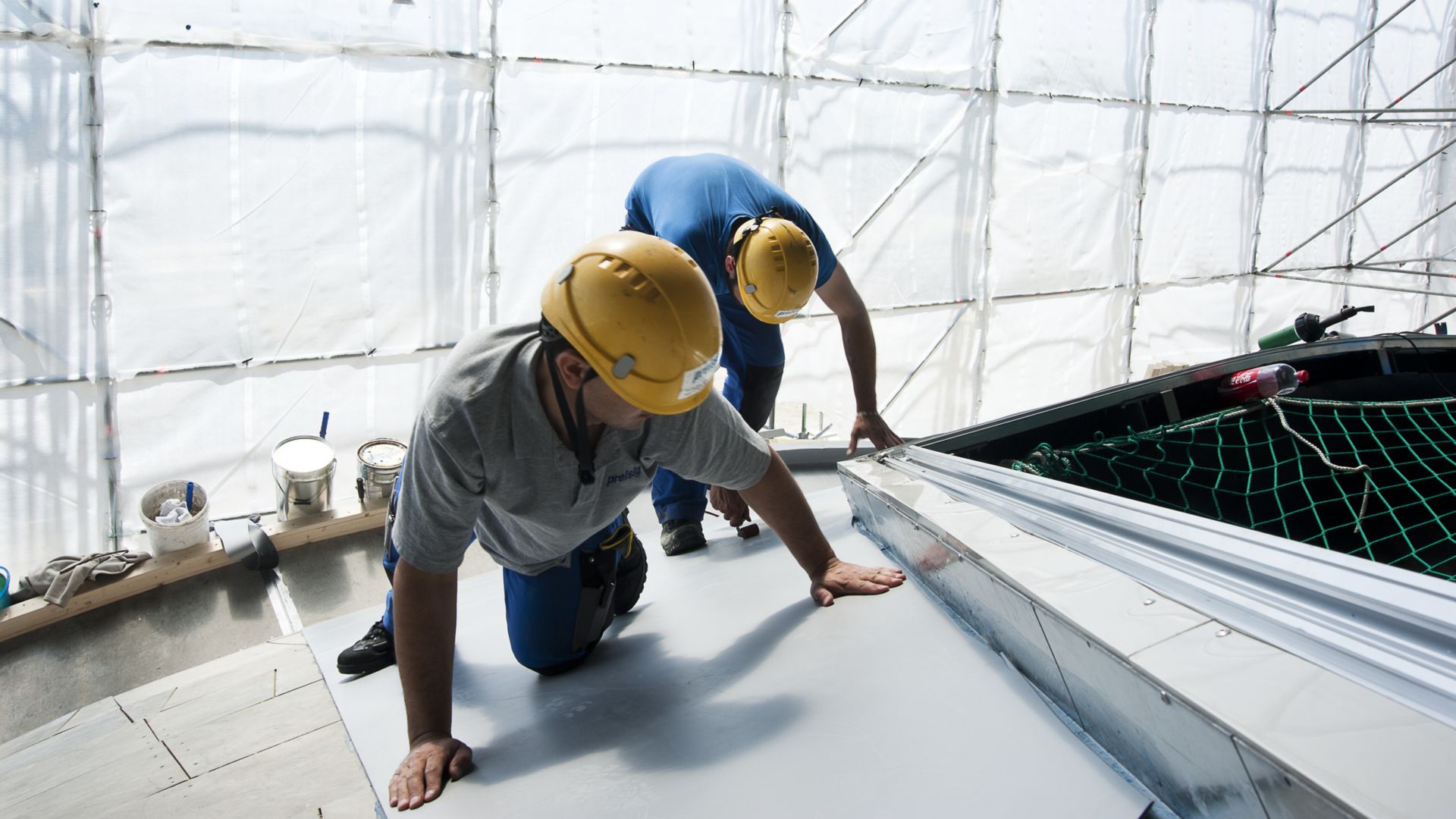TO REPAIR, RE-COVER OR REPLACE? THAT IS THE QUESTION
When the time for major roof restoration inevitably arrives, building owners and facility managers are confronted with a challenging decision to make. Is it best to repair the existing roof, leave the current roof in place and install a new roof over it or completely tear off the old roof and replace it with a brand new one?
The correct decision should yield long-term roof performance and reduced risk to employees and operations, while the wrong choice could result in premature roof failure, unexpected expenses and increased risk to employees. Luckily, we’re here to help take the stress out of the decision.
EVALUATING YOUR ROOF
Before making the critical decision of whether to repair, re-cover or replace, it’s critical for owners/facility managers to gather as much information as possible about the existing roof. An evaluation of the roof by a trained and experienced technician will provide some of this necessary information. One thing to keep in mind is that the roof evaluation shouldn’t just detect problems. Most technicians can easily locate problems, but a knowledgeable technician can pinpoint the cause of the problem and work with the owner or facility manager to develop a long-term solution.
Once all available information is gathered and reviewed, it’s decision time:
REPAIR
Repairing and maintaining your existing roof is almost always the most cost-effective option. Building owners and facility managers typically don’t realize the amount of damage caused by regular roof foot traffic or newly-installed penetrations such as skylights, HVAC units, etc. Whether it’s heavy work boots scuffing the membrane, sliding a toolbox across the roof’s surface or dropping equipment on the membrane, major issues can arise if minor problems aren’t identified and repaired in a timely manner.
If the current roof system has been properly designed, installed and maintained, then minor repairs and maintenance should be enough to prolong the roof’s life. If the system is in good condition, has limited substrate problems and dry insulation, then repairing the roof is your best bet. Be vigilant with your roof and, in most cases, you will be rewarded with long-term performance.
RE-COVER OR REPLACE
If the roof evaluation determines that you should replace your current roof, you have another big decision to make: you can either re-cover the roof or tear off the roof and replace it.
Leaving the existing roof in place and re-covering it with a new roof offers a slew of advantages. First, you save the cost and mess of a tear-off. With sustainability continuing to be an important aspect, this results in less construction material entering a landfill. Second, the building does not get exposed to the elements during a re-cover. Third, the project’s duration is shortened. Finally, new insulation can be added to the existing insulation in order to elevate your roof’s R-value.
Despite all the positives of a re-cover, there are still some drawbacks. You won’t know the condition of the deck below the roof and whether it is in safe condition. Also, you will still need to tear out any wet insulation since moisture will contribute to premature failure of the new roof.
If repairing or re-covering the existing roof is not possible, then your last resort would be to completely tear off the current roof and replace it with a new system. On the plus side, this will give you a broader choice of roof systems to use because of fewer limitations from the structural capacity of the deck or compatibility with existing materials. In addition, warranty periods from the manufacturers can be longer than with a re-cover. Finally, everything on the roof will be gone so you can fully inspect the deck for any necessary repairs. Of course, the biggest disadvantage of roof replacement is the overall cost.
THE DECISION IS YOURS
Unfortunately, there is no handbook to refer to when deciding whether to repair, re-cover or replace. Every situation is different. Typically, organizations don’t have unlimited budgets, so there will need to be cooperation and compromise. Gather as much accurate information as possible regarding the roof’s current condition before making this major decision.
* To Repair, Replace or Re-cover? - Karen Warseck, AIA, LEED AP - BOM - February 2014
* Roof Riddle: Repair, Recover or Replace - Eric Hasselbusch - Facility Maintenance Decisions - May 2015

